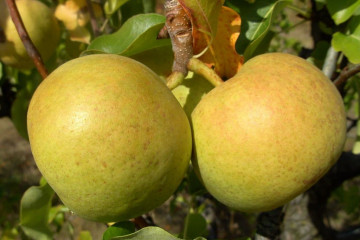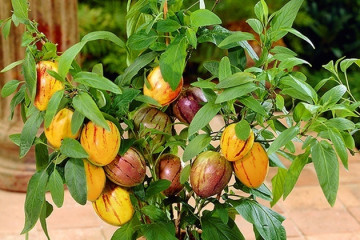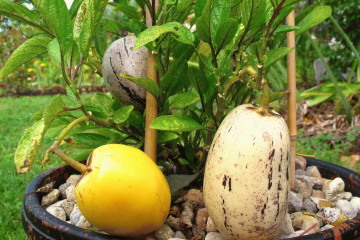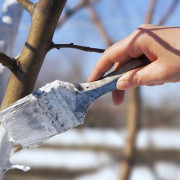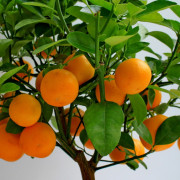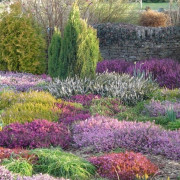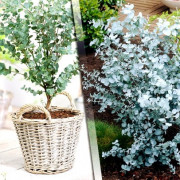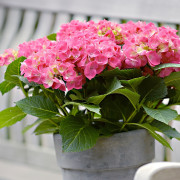Pear (tree): how it grows, care after planting and cultivation
Content:
- Description of summer, autumn and winter pear varieties
- Landing features
- Planting pears in open ground
- Reproduction methods
- Pear care in spring
- How to choose and use mineral fertilizers
- Features of pruning pears in various regions, including Siberia
- How to care for pears after pruning
- Preparing trees for winter
- What year does the pear bear fruit
- Pests, diseases and pear treatment
Pear is a picky tree, but requires some care. With the right choice of variety, planting and preventive treatment, the owner can grow a healthy specimen and wait for good yields.
Description of summer, autumn and winter pear varieties
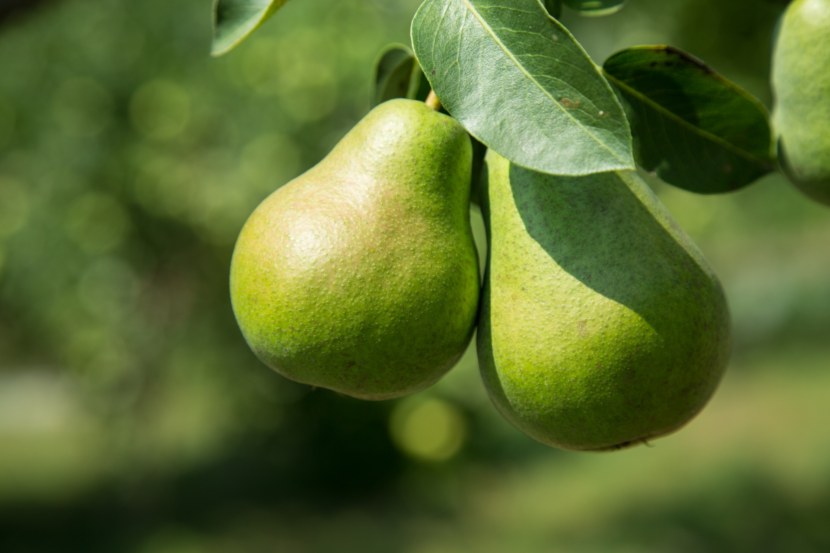
Pears on the tree
In the description of pears, there is a division according to varietal characteristics. What is the name of the pear tree: in Latin - "Pýrus".
The list of summer crops includes Lada, Limonka, Skorospelka, Lyubimitsa Klappa, Belolistka, etc. Common ones include:
- Lemon - bears fruit after 8 years, ripens in June-August. The trees are not afraid of frost, they are unpretentious and durable. Pears 100 g each, yellow in color, with juicy pulp.
- Klapp's favorite is a fruitful variety with a fruit weight above 150 g. The first pears are removed at the end of June, their flesh is slightly sour and juicy enough. The culture is self-fertile.
Autumn varieties are diverse. The list of common ones is presented:
- Talgar beauty;
- Victoria;
- Rossoshanskaya Beautiful;
- The conference;
- Duchess;
- A treasure;
- Admiral Gervais;
- Vyzhnitsa, etc.
Autumn-bearing crops are characterized by increased frost resistance, resistance to fungal and bacterial infections. Large pears, from 250 g, ripen in September-October.
The list of winter varieties includes:
- Veles;
- Muscovite;
- Marble;
- Curé;
- Patriotic, etc.
Pears of the third type are large, with a persistent aroma. Plants are undemanding to care, bear fruit for 3-5 years from the date of planting, are resistant to cold and disease.
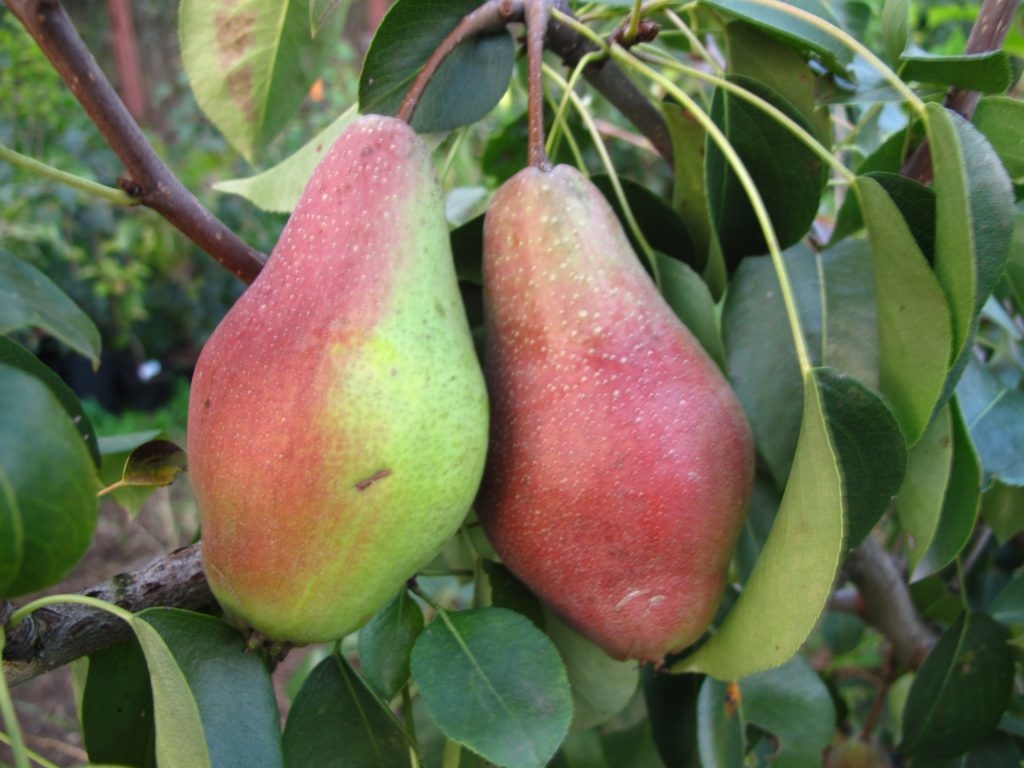
Winter Yakovlevskaya
Landing features
Garden pears are planted in the spring and autumn seasons in the open ground. The first option has several advantages:
- the planting pit is prepared before winter, it is ideally prepared for the season;
- the soil moistened with thawed snow provides comfortable conditions for seedlings;
- during the spring-summer season, the young grow stronger, gaining strength for wintering.
This period is suitable for areas with short summers and early cold weather. When planting in the second case, the tree may not have time to root. On autumn days, planting is carried out in areas with dry summers and droughts, in order to avoid burnout of seedlings and roots. The optimal time is late September, early October.
Planting pears in open ground
When planting work, follow the rules:
- in spring - it is produced before the start of the movement of juices, requires frequent watering and care;
- in the fall - it is planted before the foliage falls, 3 weeks before the first frost.
A sun-loving tree is planted in a lighted place on the site, in a slightly acidic sandy loam soil.The distance between the seedlings is at least 5 m, the hole is from 70 cm wide, and from 1 m deep. The bottom of the hole is filled with rusty nails, covered with a layer of earth, rammed and watered. Fertile soil is poured on top, slightly loosened and a tree is planted.

Landing scheme
Reproduction methods
The beneficial options include vegetative: cuttings, layering, grafting or copulation. The method depends on the preference of the owner.
Propagation of pears by layering
Suitable for 3-4 year old trees:
- A two-year-old shoot is chosen and bent to the ground.
- A box with soil mixture is placed under the branch, several cuts are made at the point of contact with the ground and coated with Kornevin.
- The branch is fixed with a wire, slightly deepening into the soil.
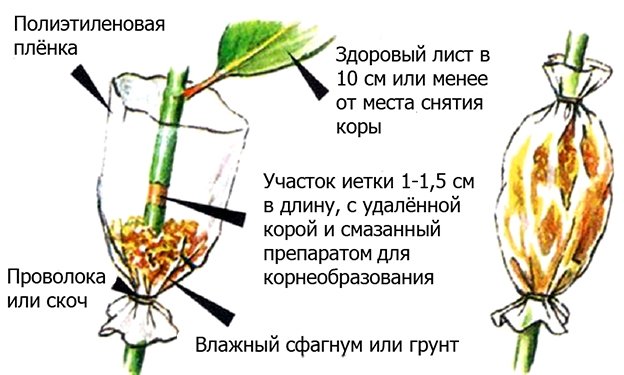
Reproduction by layering
Propagation of pears by cuttings
Green scraps are harvested at the end of intensive shoot growth. They are cut with sharp scissors, creating smooth cuts. Each cutting should have 2 leaves and up to 3 internodes. The lower sections are directed at an angle towards the kidney, the upper sections are directed horizontally.
The cuttings are rooted in a mini-greenhouse (height from 35 cm), filled with fertile soil and mineral fertilizer. A layer of the mixture up to 20 cm, river sand is poured on top, no more than 5 cm. The lower side of the trim is treated with "Kornevin", deepened by 2 cm. A plastic film is pulled from above, which is removed after 2 weeks.
Reproduction through grafting (copulation)
A pear is grafted onto a cultivated and semi-cultivated stock or other fruit trees, including apple, quince, hawthorn, etc. Shoots are cut off when sap flow slows down, in October-March. Before manipulation, they can be stored in the refrigerator by immersing the bottom cut in river sand.
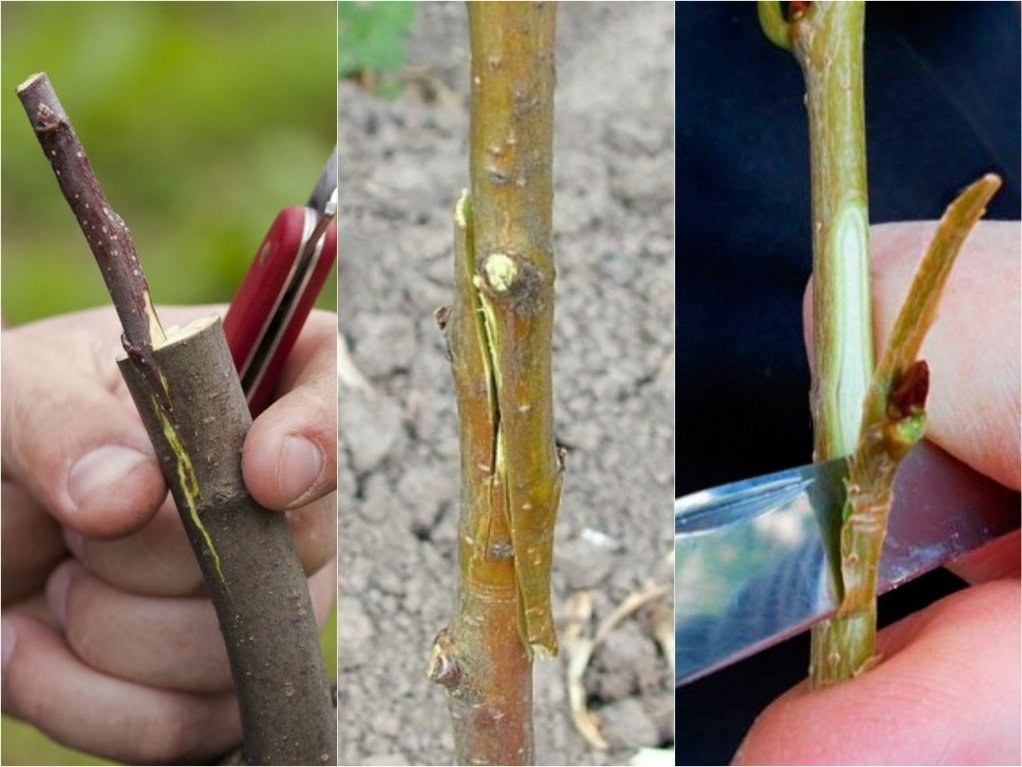
Copulation option
Pear care in spring
How to care for a pear in the spring:
- winter shelter is removed from young trees - after complete thawing of the soil;
- whitewash the trunk - in February-March, if the procedure was not carried out before winter;
- do sanitary pruning - with the removal of damaged branches;
- bend the branches 60-90 degrees (depending on how the pear grows) - to accelerate fruiting;
- loosen, mulch the soil around the pear;
- infrequently, but watered abundantly.
How to choose and use mineral fertilizers
In the spring, complex mineral fertilizers are applied, including Nitroammofoska. Top dressing is carried out in accordance with the manufacturer's recommendations, nitrogen in its pure form is not used - in order to avoid active growth of the culture.
When flowering, preference is given to potassium-phosphorus mixtures, you can use "Activin", "Fertik", "Plantafol". After the season, gardeners recommend adding up to 0.5 kg of wood ash.

Fertilization rate
Features of pruning pears in various regions, including Siberia
Best processing time:
- Spring - before the start of the juice movement. After turning it on, the tree activates immunity, which prevents the development of pathogens.
- Autumn - after the fall of the foliage. There should be a positive temperature outside, after it drops to -5 degrees, manipulations are prohibited.
How to care for pears after pruning
After the procedure, the care consists of:
- in the processing of cuts - with a special garden paste, oil paint mixed with drying oil;
- watering - soil moistening is carried out three times per season, from 5 to 20 buckets per procedure (depending on temperature conditions);
- top dressing - before flowering, during it, after the buds fall, before ripening and after harvesting.
Preparing trees for winter
Before the winter period:
- the tree is examined, cleared of foliage and pears;
- carry out water-charging irrigation;
- feed and cut;
- treated for diseases and pests.
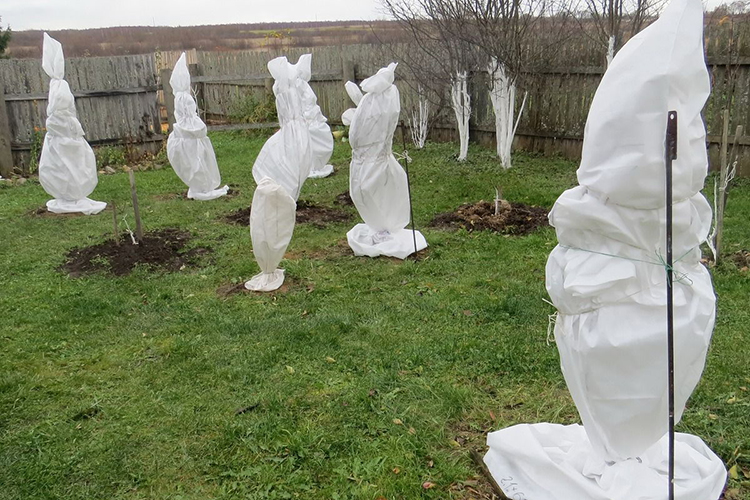
Preparing for winter
What year does the pear bear fruit
The timing depends on the grade:
- some bloom for 3-4 years, these include Lada, Medovaya, Sibiryachka, etc.;
- others bear fruit for 6 or 8 years - the list is presented by Favorite, Duchess, Bergamot, Forest Beauty.
Pests, diseases and pear treatment
How to care for a pear after planting: the mandatory program includes preventive treatment against insects and infections. In some cases, the diseased tree is treated.
Powdery mildew
What a diseased pear looks like: symptoms appear with warming, a deep white bloom appears on the foliage. As the greenery grows, the color changes to red. Treatment involves treatment with "Sulfite" or "Fundazol".
Sooty fungus
Blackening of the foliage is the main symptom of the disease, later a plaque similar to soot appears on it. The defeat initially affects young trees, then - passes to adult plants. First, treatment with insecticidal solutions is carried out, later - with Fitoverm. It helps stop the spread of fungal spores.
Fruit rot
The disease manifests itself as brown spot, followed by the formation of growths containing spores. The fungus is spread by wind, birds and insects. When symptoms of the disease appear, you can use:
- Aktofit;
- "Baikal";
- Ecoberin.
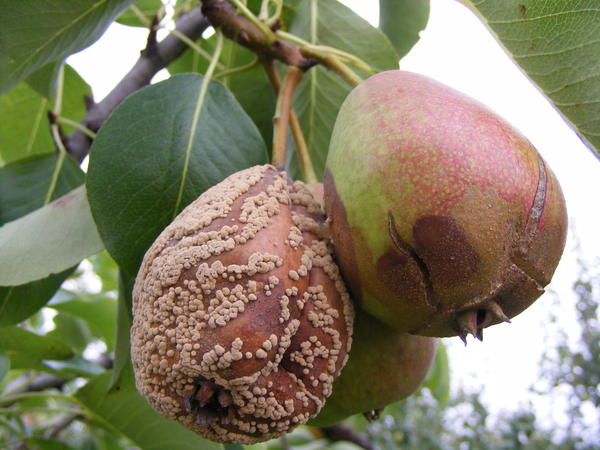
Fruit rot
Stem rot
Cytosporosis is detected in brown lesions with a reddish tint. The damaged places are located on the trunks of the culture; over time, the bark begins to dry out in the affected area.
Treatment includes cutting wood to healthy tissue, copper sulfate treatment. They are covered with clay from above, covered with a clean cloth.
Scab
Symptoms of pathology begin with the formation of small spots of an olive shade on the inner surface of the sheets. These changes are fungal spores. In the future, the clinical signs of scab on pears appear:
- cracks and rot;
- hardening of the pulp;
- deformation - if the disease affected them at the beginning of formation.
The therapy includes spraying plants with a 1% solution of Bordeaux liquid. Treatment is carried out after bud break, during flowering, after the completion of budding. If the procedures turned out to be ineffective, then the plantings are processed with the help of Nitrofen, Dnoka or Skor.
Pear trees do not belong to crops that are capable of harvesting the next season after planting. The gardener will have to be patient and properly care for the crop.Preventive treatments against pests, diseases, timely watering, fertilization, sanitary pruning and loosening of the land will help grow healthy and strong specimens in the country, with large and sweet fruits.


